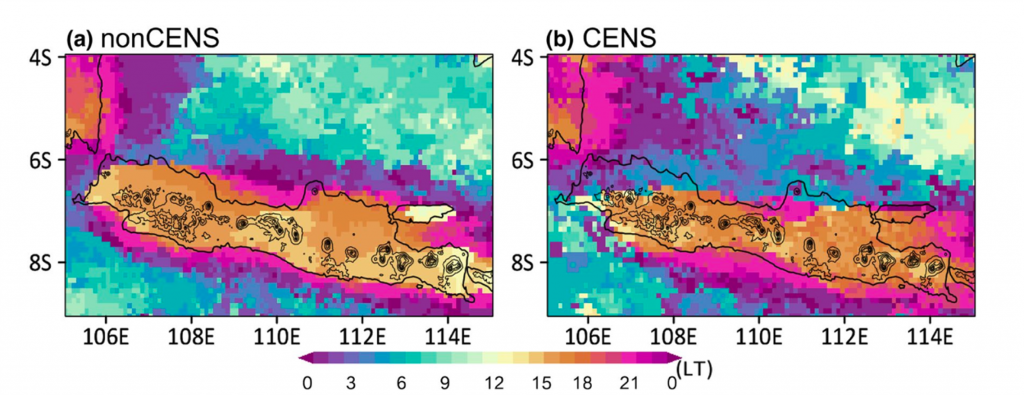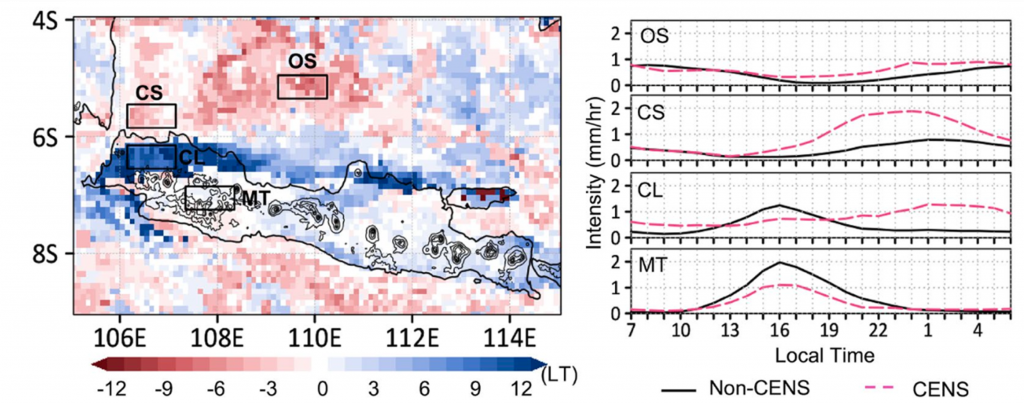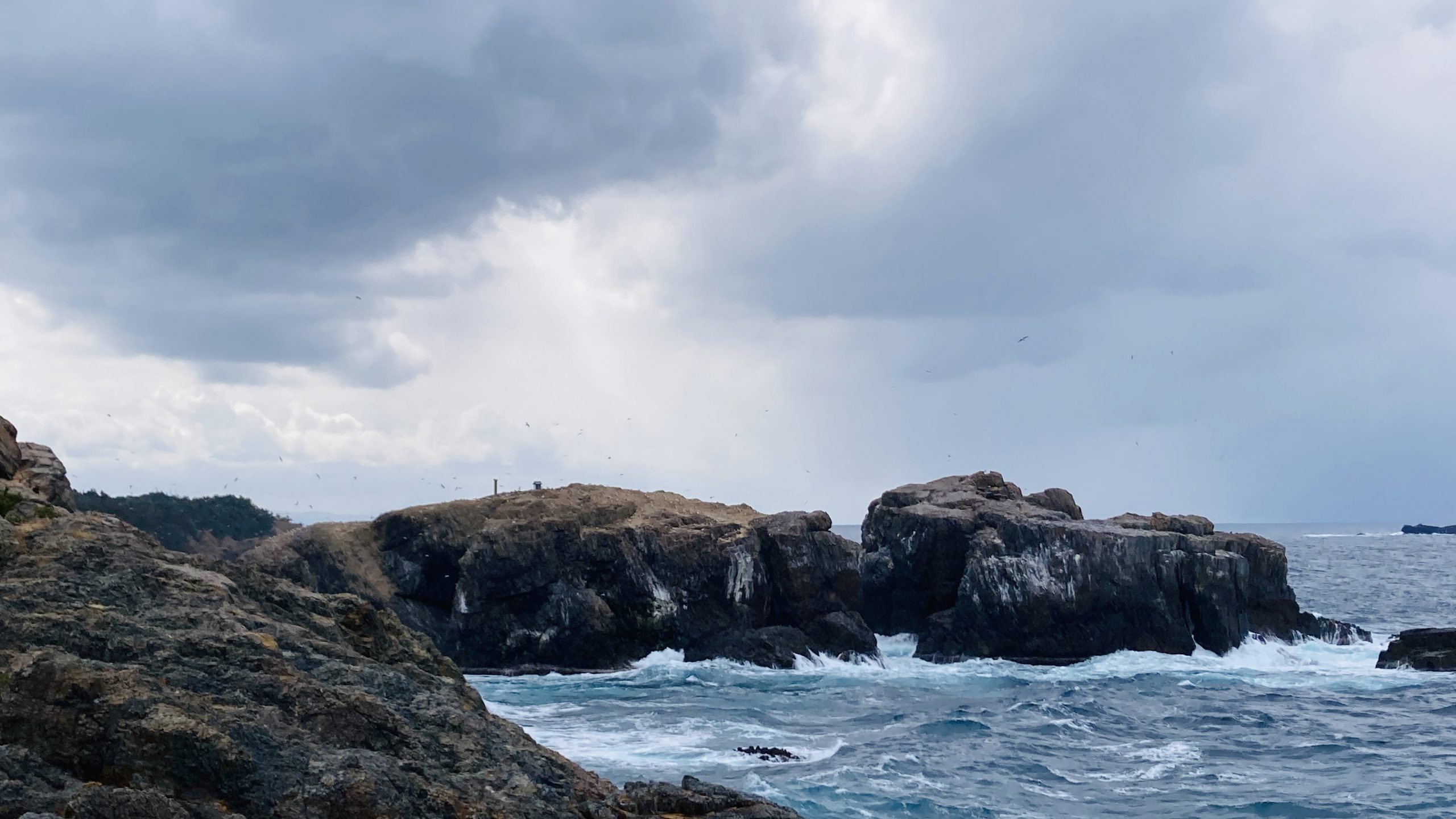Featured image is private assets
Written by Madam Taqiyya
During the rainy season, you might hear someone say, “Let’s go out before 4 p.m., because it will probably rain after that.” How do they know? Perhaps, without even realizing it, they have learned to recognize the diurnal rainfall pattern in their area.
Diurnal rainfall pattern means repeated rainfall pattern which characterized by wet regime and dry regime within 24 hours cycle. Diurnal rainfall is a prominent feature of rainfall over the tropics. It is related to extreme events that cause flood disasters, for example Jakarta flood in 2007, Semarang flood in 2021, etc. (Wu et al., 2007; Trilaksono et al., 2012; Hermawan et al., 2022).
In the tropical region, insignificant synoptic pressure differences give rise to local- and meso-scale pressure differences for generating weather systems. Local- and meso-scale pressure gradient is generated by the diurnal solar heating and difference heat capacity (thermal gradient) between land and sea and also between mountain and valley. In another word, it is strongly associated with the solar forcing. However, its variability also affected by the topography which determine the thermal gradient among areas. Archipelagic region and complex topography of Indonesia is really meets the criteria.
The time when the highest rainfall intensity occurs is called ‘phase’. While the difference between the rainfall minima and maxima is called amplitude shows the strength of the diurnal variability. Generally inland areas have late afternoon to evening phase while sea areas have afternoon rainfall. However, the phase of coastal area is compromise between land and sea depend on the topography of surrounding area, indicate more complex interaction occurs in coastal areas.
One important phenomenon that can disrupt the phase and amplitude of diurnal rainfall over the coastal area the strong northerly wind phenomenon, known as the cross‑equatorial northerly surge (CENS). CENS occurs during the boreal winter, specifically when strong monsoonal winds from the Eastern Asia cross the equator through the South China Sea and blow toward the southern part of Indonesian Maritime Continent, including Java Island. CENS can intensify moisture transport from the South China Sea and enhance wind convergence along the northern coast of Java. As a result, it can shift the phase and intensify (or supressed) the amplitude of diurnal rainfall.
Figure 1 compare the diurnal rainfall pattern among regions during normal (nonCENS) and CENS condition. Under non‑CENS conditions, most of the northern coast of Java experiences rainfall maxima in the late afternoon to evening. CENS shifts these maxima to the midnight–early morning hours, especially in northwestern coast of Java Island. The phase shift varies along the northern coast of western and eastern part of Java Island.

Spatial pattern of the DCR phase [shaded; local time] during (a) nonCENS and (b) CENS. (Source: Maulana et al. 2023)
The phase difference between CENS and nonCENS (CENS minus nonCENS) is shown in Figure 2 (left). The phase are delayed by 6–12 hours over the coastal, whereas over the open sea, rainfall maxima occur earlier. When we subset the area of mountainous area, coastal land, coastal sea, and offshore, we get the time series of diurnal rainfall in Figure 2 (right). The rainfall intensity over coastal sea, coastal land, and offshore is higher than mountainous area. The highest rainfall intensity occurs in over the coastal sea, while significant phase shift occurs over the coastal land. The phase shift and increased rainfall intensity over the offshore is not significant.

The time difference between CENS and nonCENS phase (left). The negative value [red-shaded] means the DCR phase during CENS is earlier, and the positive value [blue-shaded] means the DCR phase during CENS is later. The time series of the diurnal rainfall (right) that represents the offshore area (OS), coastal sea area (CS), coastal land area (CL), and mountainous area (MT) [solid black lines are for nonCENS; dashed pink lines are for CENS]. (Source: Maulana et al. 2023)
Further reading: https://doi.org/10.1186/s40562-023-00293-8
